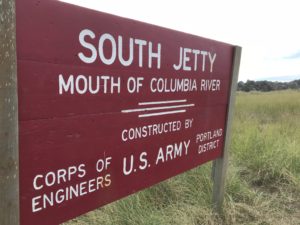
This year makes the third road trip I have taken down the Oregon coast. And each time I started in the Astoria, Oregon area, which is situated where the mighty Columbia River meets the Pacific Ocean. Astoria is a working port city, and per Wikipedia, was the site of the first U.S. Post Office west of the Rockies.
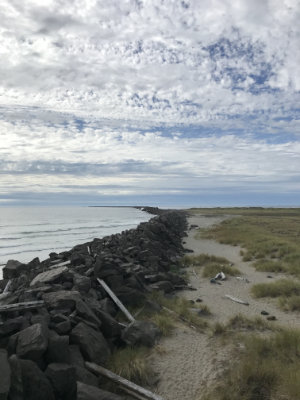

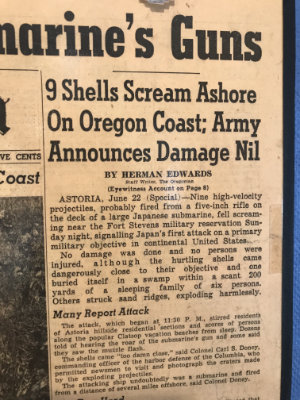
I spent a day at the Columbia River Maritime Museum in Astoria. I dropped Sally and Trax off at a Rover.com pet-sitter, and drove down the steepest hill I have ever been on in my camper. It must have been at 15% grade. The museum is right on the river and has tons of parking (which for an RV’er is always top of mind).
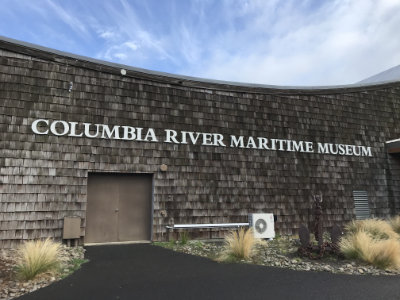
The museum was pretty cool — lots of focus on the challenges presented by the meeting of the Columbia River to the Pacific Ocean. The area is called the Columbia Bar. Each year the ocean currents build up sandbars equivalent to 5-10 feet high. It’s up the Army Corps of Engineers to dredge to remove the sand from the Bar. In a typical year, they dredge enough sand to fill 500,000 dump trucks.
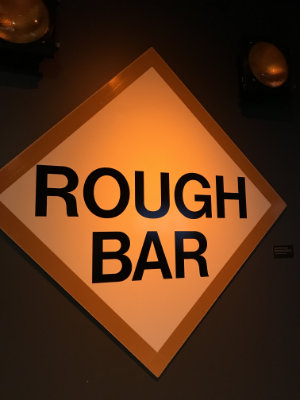
The museum also features exhibits that describe the efforts on the part of the Coast Guard to rescue ships and crew that run into trouble navigating the Columbia Bar.
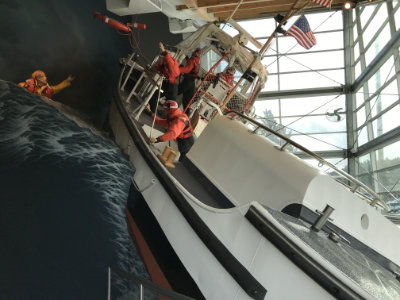
There were two exhibits that I found most unique and memorable. First, and shown below, is a Japanese abalone and sea urchin fishing boat. It was swept out to sea during the 2011 tsunami in Japan, and washed ashore TWO YEARS LATER at Cape Disappointment, which is just a few miles from the museum on the Washington coast.
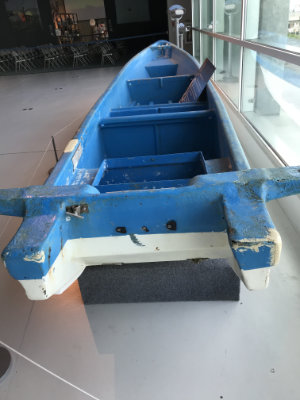
Another very cool exhibit was one entitled, A Peaceful Return, that featured Japanese flags, called Yosegaki Hinomaru. The flags, covered in signatures and messages of support by family and friends, were carried into battle by Japanese soldiers in World War II.
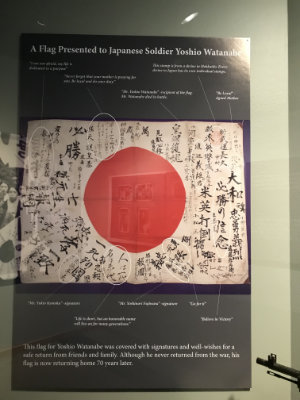
As part of the tragedy of war, many of the Yosegaki flags came home with returning American soldiers, who collected them from fallen Japanese as souvenirs. Many of the flags, along with other war mementos, were put away in lockers and boxes where they mostly sat for the intervening 70-odd years.
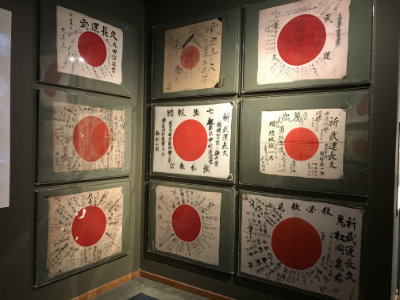
In recent years, these flags began surfacing in veterans’ war memorabilia, and the American families are realizing that the flags are personal items that belong to the family of the lost Japanese soldier. A non-profit group, OBON, collects the flags from veterans, researches the family history, and arranges for flags to be returned to the family. OBON is named after the Japanese season when ancestors’ spirits are honored. You can find out more about the OBON Society here… http://obonsociety.org.
A Peaceful Return. What a lovely title for an exhibit. Making peace one flag at a time.
Thanks for your patience as I took a blogging break. I had several campgrounds with no internet in recent weeks. And quite frankly I’ve been distressed, as we all are, at the negativity that we see every day in our news reports. I will admit that it’s taken a little of the wind out of my sails. But there’s two things I CAN do. Writing is a great outlet, so I am back to it. And I am changing my travel schedule a little bit so that I can be back in the Phoenix area on election day in November to cast my ballot in person. I’m going to dedicate my vote to peace — we certainly could use some at all levels.

Your blog entries of museums are so very interesting! The tsunami boat…makes you wonder why the owner didn’t want it back. And “Peaceful Return” is such a wonderful program. Certainly would be nice if the American soldier could write an explanation of how he acquired it and found out about returning it.
Thank you so much for touring these unique museums for us!
Laurie, I agree that it would be interesting to hear the perspective of the American soldier. But I got the sense that the flags tend to be found by the children and grandchildren of the veterans when they are going through their deceased parents’/grandparents’ stuff.
Thanks so much for your posts, Eileen. Your blog is one of my favorite comfort-reads. :-) next time you are up here, I can take you on an easy-ish hike above/behind the lighthouse st Cape Disappointment: there is an d bunker there where they watched out for a Japanese invasion that never came.
Very nice to think of those flags making their way back to Japanese families.
Thanks for sharing that important story!!